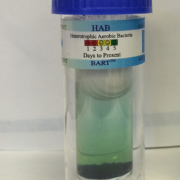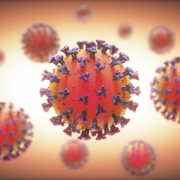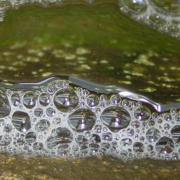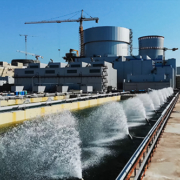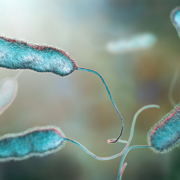Four things that you should know if you must test your cooling water for Legionella Bacteria, Part 1
This blogpost will review the first three things that you should know if you must test your water for legionella bacteria. The next blogpost will review the fourth thing that you should know – how to choose one of the currently-commercialized laboratory and/or field tests for legionella bacteria.
Monitoring for legionella bacteria includes monitoring sessile bacteria.
There is no correlation between the population of sessile and/or planktonic HPC bacteria and Legionella pneumophila bacteria; however, the presence of sessile anaerobic bacteria (“slime”) is an indication that the environmental conditions may be conducive to the proliferation of legionella bacteria because the legionella bacteria require a symbiotic relationship with a host organism such as an amoeba or protozoa to reproduce.
Monitoring for legionella bacteria includes identifying the optimal samples and sample locations.
Selecting the optimal sample type and location depends on the objective of the legionella testing. For example, if the objective is to confirm the source of a Legionellosis outbreak, then the CDC recommends spread plate culture tests for a set of bulk water and biofilm swab samples 1 from the cooling tower
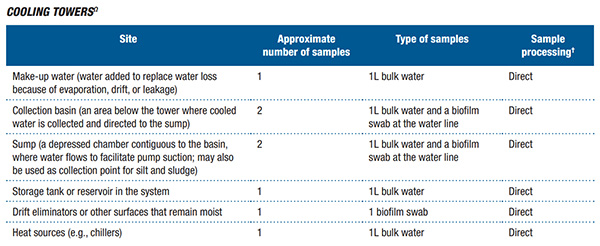
If the objective of testing is to confirm the efficacy of the biocide treatment program in a cooling water system, then faster field test methods that measure both viable-and-culturable and viable-but-not-culturable legionella bacteria would be appropriate.
A robust assessment of the risks includes samples of both bulk water and sessile bacteria (“slime”). Ideally, the bulk water sample should be representative of the water droplets that may leave the cooling tower with the plume – the “hot” water returning to the cooling tower, flowing into a distribution header or onto the top deck of the cooling tower. Locations for collecting samples of sessile bacteria are more challenging. In a crossflow cooling tower, it might be possible, albeit difficult, to obtain a sample of sessile bacteria in the sediment that accumulates on the hot deck; in a counterflow cooling tower, it’s impossible to obtain a sample of sessile bacteria from the interior surface of the distribution header.
On-line monitoring for sessile bacteria provides additional information about the ability of the system to support the proliferation of legionella bacteria.
Some experts have disputed the assertion that legionella requires a host organism such as an amoeba or protozoa to reproduce; however, proliferation of legionella in the absence of a host organism has been found only in the laboratory culture.2 Consequently, monitoring for sessile bacteria that includes amoebas and protozoa can provide important information about the ecosystem for legionella proliferation. A mesh coupon is an excellent way to monitor sessile bacteria.

John Dresty and Paul Puckorius describe a test method for sessile bacteria trapped on a mesh coupon in an article published in a cooling trade publication.4 The stainless steel mesh coupon should be installed the first location in the bypass racks for corrosion coupons.
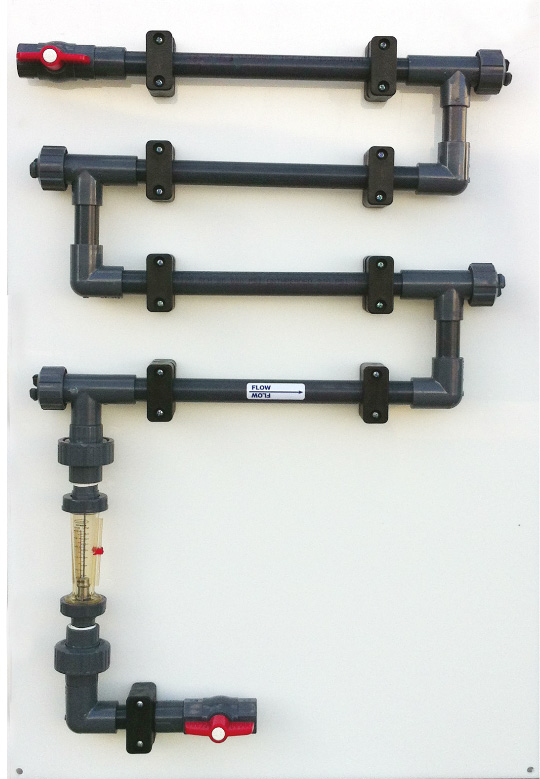
A more sophisticated method to measure
biofilm is Bio-GeorgeTM, a monitoring system that allows real-time
monitoring of the presence of sessile bacteria and the effectiveness of the
biocide chemistry and treatment protocol. The system consists of a probe,
integrated electronics and display software. The probe is installed into a
piping system, heat exchanger water box, cooling tower, or side stream via a
2-inch threaded connection. Special probes can also be built for “hot tap”
type fittings or flow-through probes.
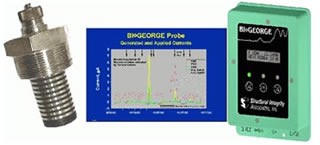
Are you worried about legionella in your cooling tower? Or in your building’s water systems? We’re here to help. Call us (609-896-4457) or send us an email (huchler@martechsystems.com).
P. S. Don’t forget to subscribe to our blog.
[1] https://www.cdc.gov/legionella/downloads/cdc-sampling-procedure.pdf
[2] Legionella and Legionnaires’ Disease: 25 Years of Investigation, Fields, Barry S., Benson, Robert F., Besser, Richard E., Respiratory Diseases Branch, Division of Bacterial and Mycotic Diseases, National Center for Infectious Disease, Centers for Disease Control and Prevention, Atlanta, Georgia 30333
[4] Dresty, John E., Puckorius, Paul, “Testing Cooling Tower Water for Total Bacteria and Legionella,” https://www.process-cooling.com/articles/89404-testing-cooling-tower-water-for-total-bacteria-and-legionella
[5] http://advantagecontrols.com/products.php?category_id=4&products_id=10

